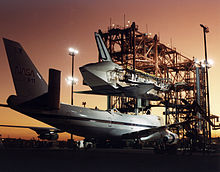
The John F. Kennedy Space Center, located on Merritt Island, Florida, is one of the National Aeronautics and Space Administration's (NASA) ten field centers. Since 1968, KSC has been NASA's primary launch center of American spaceflight, research, and technology. Launch operations for the Apollo, Skylab and Space Shuttle programs were carried out from Kennedy Space Center Launch Complex 39 and managed by KSC. Located on the east coast of Florida, KSC is adjacent to Cape Canaveral Space Force Station (CCSFS). The management of the two entities work very closely together, share resources, and operate facilities on each other's property.

The Space Shuttle is a retired, partially reusable low Earth orbital spacecraft system operated from 1981 to 2011 by the U.S. National Aeronautics and Space Administration (NASA) as part of the Space Shuttle program. Its official program name was Space Transportation System (STS), taken from the 1969 plan led by U.S. Vice President Spiro Agnew for a system of reusable spacecraft where it was the only item funded for development.

Space Shuttle Enterprise was the first orbiter of the Space Shuttle system. Rolled out on September 17, 1976, it was built for NASA as part of the Space Shuttle program to perform atmospheric test flights after being launched from a modified Boeing 747. It was constructed without engines or a functional heat shield. As a result, it was not capable of spaceflight.

The Space Shuttle program was the fourth human spaceflight program carried out by the U.S. National Aeronautics and Space Administration (NASA), which accomplished routine transportation for Earth-to-orbit crew and cargo from 1981 to 2011. Its official program name was Space Transportation System (STS), taken from a 1969 plan for a system of reusable spacecraft where it was the only item funded for development, as a proposed nuclear shuttle in the plan was cancelled in 1972. It flew 135 missions and carried 355 astronauts from 16 countries, many on multiple trips.
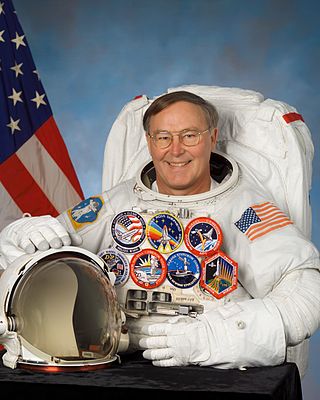
Jerry Lynn Ross is a retired United States Air Force officer, engineer, and a former NASA astronaut. Ross is a veteran of 7 Space Shuttle missions, making him the joint record holder for most spaceflights.

STS-51-D was the 16th flight of NASA's Space Shuttle program, and the fourth flight of Space Shuttle Discovery. The launch of STS-51-D from Kennedy Space Center (KSC), Florida, on April 12, 1985, was delayed by 55 minutes, after a boat strayed into the restricted Solid Rocket Booster (SRB) recovery zone. STS-51-D was the third shuttle mission to be extended.

STS-30 was the 29th NASA Space Shuttle mission and the fourth mission for Space Shuttle Atlantis. It was the fourth shuttle launch since the Challenger disaster and the first shuttle mission since the disaster to have a female astronaut on board. The mission launched from Kennedy Space Center, Florida, on May 4, 1989, and landed four days later on May 8, 1989. During the mission, Atlantis deployed the Venus-bound Magellan probe into orbit.
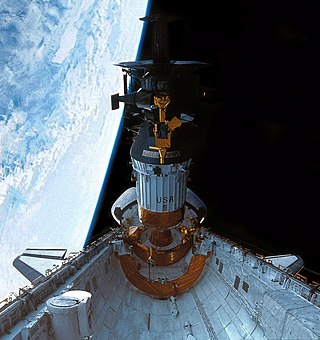
STS-34 was a NASA Space Shuttle mission using Atlantis. It was the 31st shuttle mission overall, and the fifth flight for Atlantis. STS-34 launched from Kennedy Space Center, Florida, on October 18, 1989, and landed at Edwards Air Force Base, California, on October 23, 1989. During the mission, the Jupiter-bound Galileo probe was deployed into space.

STS-38 was a Space Shuttle mission by NASA using the Space Shuttle Atlantis. It was the 37th shuttle mission and carried a classified payload for the U.S. Department of Defense (DoD). It was the seventh flight for Atlantis and the seventh flight dedicated to the Department of Defense. The mission was a 4-day mission that traveled 3,291,199 km (2,045,056 mi) and completed 79 revolutions. Atlantis landed at Kennedy Space Center's Shuttle Landing Facility's runway 33. The launch was originally scheduled for July 1990 but was rescheduled due to a hydrogen leak found on Space ShuttleColumbia during the STS-35 countdown. During a rollback to the Orbiter Processing Facility Atlantis was damaged during a hail storm. The eventual launch date of November 15, 1990, was set due to a payload problem. The launch window was between 18:30 and 22:30 EST. The launch occurred at 18:48:13 EST. The mission ended with a landing at the Shuttle Landing Facility, marking the first time in five years that a mission returned to the Kennedy Space Center since STS-51-D. This also marked the first time Atlantis ended a mission at the Kennedy Space Center.
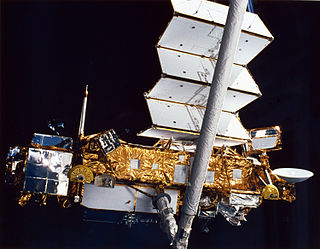
STS-48 was a Space Shuttle mission that launched on September 12, 1991, from Kennedy Space Center, Florida. The orbiter was Space ShuttleDiscovery on her 13th flight. The primary payload was the Upper Atmosphere Research Satellite (UARS). The mission landed on September 18 at 12:38 a.m. EDT at Edwards Air Force Base on runway 22. The mission was completed in 81 revolutions of the Earth and traveled 3,530,369 km (2,193,670 mi). The 5 astronauts carried out a number of experiments and deployed several satellites. The total launch mass was 108,890 kg (240,060 lb) and the landing mass was 87,440 kg (192,770 lb).

Norman Earl Thagard is an American scientist and former U.S. Marine Corps officer and naval aviator and NASA astronaut. He is the first American to ride to space on board a Russian vehicle, and can be considered the first American cosmonaut. He did this on March 14, 1995, in the Soyuz TM-21 spacecraft for the Russian Mir-18 mission.

The Shuttle Carrier Aircraft (SCA) are two extensively modified Boeing 747 airliners that NASA used to transport Space Shuttle orbiters. One (N905NA) is a 747-100 model, while the other (N911NA) is a short-range 747-100SR. Both are now retired.

STS-74 was the fourth mission of the US/Russian Shuttle–Mir program, and the second docking of the Space Shuttle with Mir. Space Shuttle Atlantis lifted off from Kennedy Space Center launch pad 39A on 12 November 1995. The mission ended 8 days later with the landing of Atlantis back at Kennedy. It was the second in a series of seven straight missions to the station flown by Atlantis.
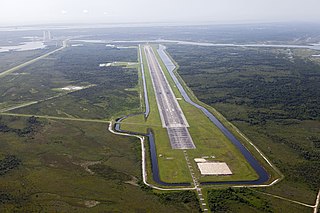
The Shuttle Landing Facility (SLF), also known as Launch and Landing Facility (LLF), is an airport located on Merritt Island in Brevard County, Florida, United States. It is a part of the Kennedy Space Center and was used by Space Shuttle for landing until July 2011. It was also used for takeoffs and landings for NASA training jets such as the Shuttle Carrier Aircraft and for civilian aircraft.

Vandenberg Space Launch Complex 6 is a launch pad and associated support infrastructure at Vandenberg Space Force Base in California. Construction at the site began in 1966, but the first launch didn't occur until 1995 due to program cancellations and subsequent repurposing efforts.

The Approach and Landing Tests were a series of sixteen taxi and flight trials of the prototype Space Shuttle Enterprise that took place between February and October 1977 to test the vehicle's flight characteristics. Of the sixteen taxi-tests and flights, eleven saw Enterprise remain mated to the Shuttle Carrier Aircraft (SCA), while the final five had the shuttle jettisoned from the SCA, with the on-board crew flying and landing the spacecraft.

45th Weather Squadron, 45th Operations Group, Space Launch Delta 45, at Patrick Space Force Base, Florida performs weather assessments for air and space operations; specifically, weather observations, forecasts, advisories, and warnings. It specialized in the weather assessments for the Space Shuttle launches at Kennedy Space Center (KSC) and Cape Canaveral Space Force Station.
The Space Shuttle recovery convoy was a fleet of ground vehicles, many of which were specially-designed for their purpose, staged at the landing site of a Space Shuttle orbiter which assist the crew in egress and safe the vehicle and its payload after landing. Some vehicles and equipment which were very specific to the shuttle program were retired and either sold at auction or transferred to museums for public display. The majority of convoy vehicles were stored in buildings near the Shuttle Landing Facility.
